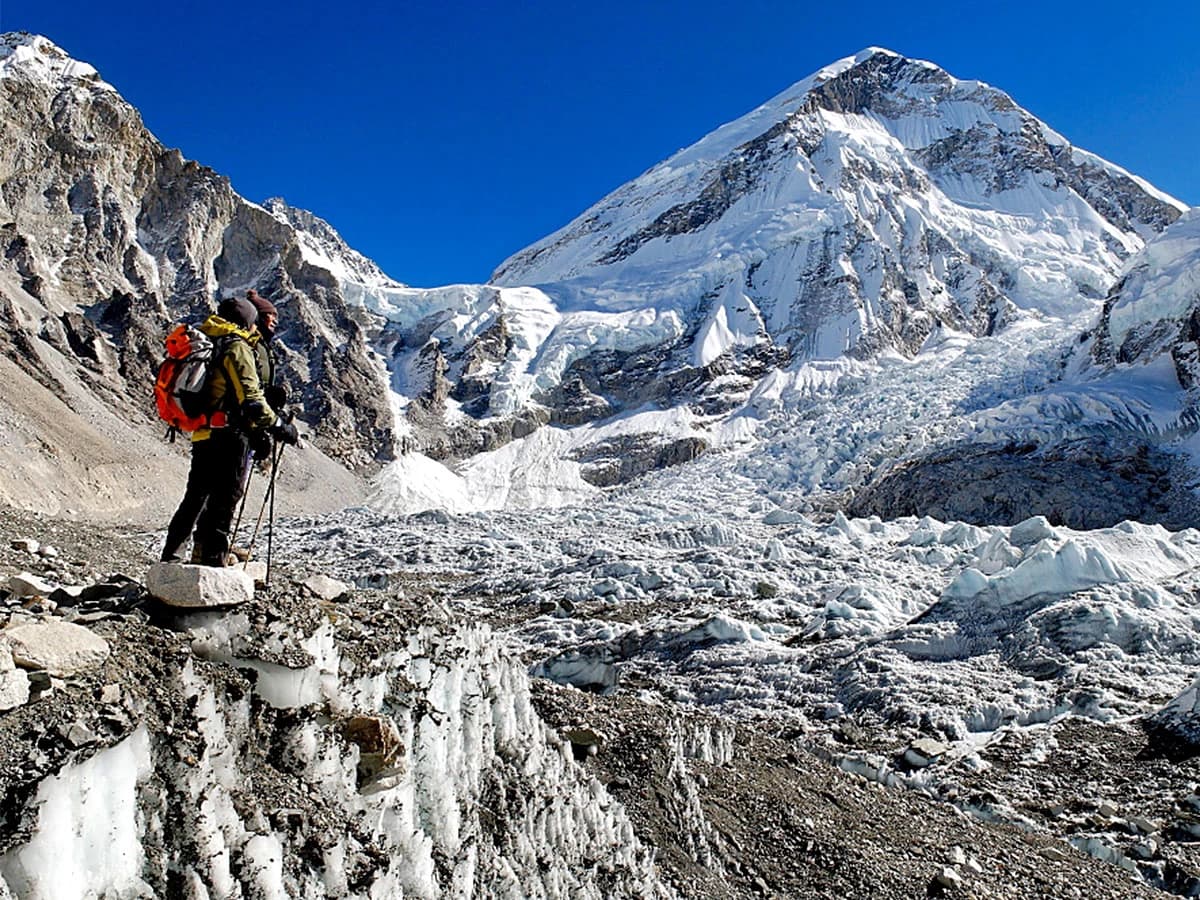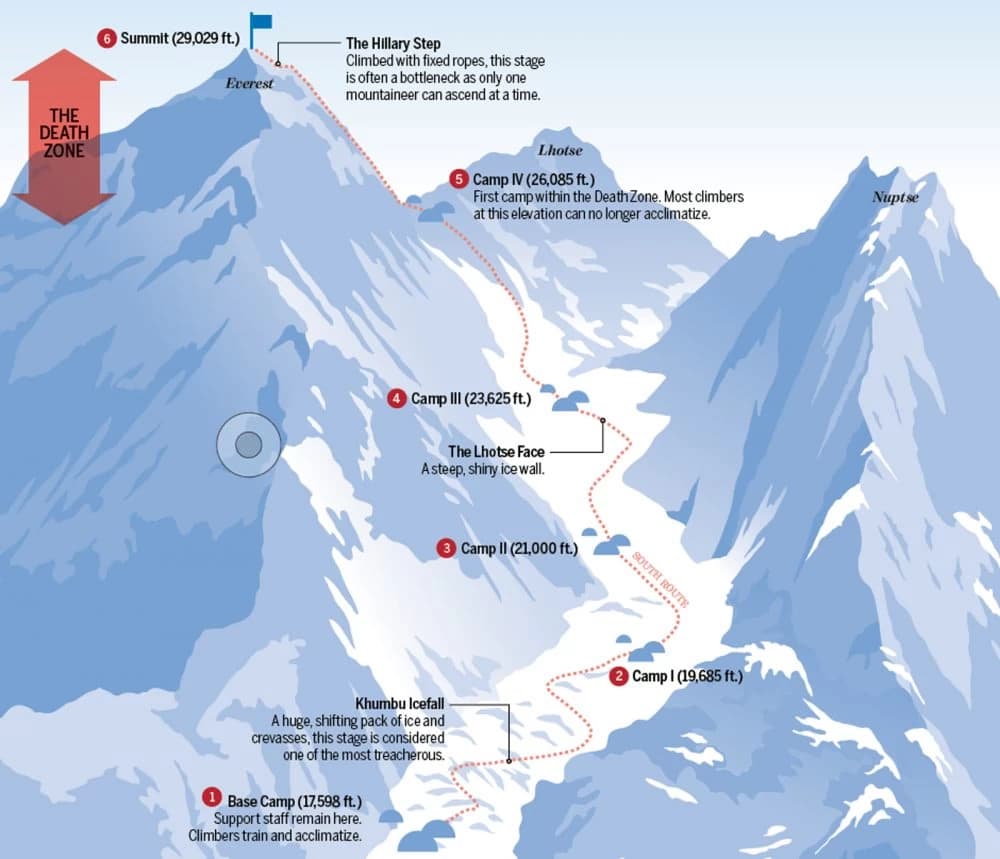Overview
An Everest expedition is a journey of unparalleled physical, mental, and emotional endurance that attracts climbers from around the world. Scaling the world’s highest peak, 8,848 meters, is a formidable feat that requires rigorous preparation, excellent mountaineering skills, and exceptional mental resilience. Here’s a look at the detailed highlights of an Everest expedition, from preparation to reaching the summit and descending safely.
Preparation for an Everest expedition typically begins a year or more in advance. Training includes intense physical workouts to build strength, endurance, and flexibility. Cardio exercises, strength training, and hiking with a heavy backpack prepare climbers to handle the rigorous challenges of the high-altitude climb. Acclimatization climbs on other peaks like Lobuche or Island Peak are often included, helping climbers get used to the thinner air at higher altitudes.
In addition to physical training, climbers must invest in specialized gear, from clothing suitable for extreme cold to technical equipment such as crampons, ice axes, and oxygen tanks. Most climbers hire an experienced guide or join an organized expedition to ensure logistical support, medical help, and guidance on the mountain.
An Everest expedition typically begins in Kathmandu, where climbers meet guides, conduct equipment checks, and get final briefings. After obtaining the necessary permits, the journey continues with a scenic flight to Lukla, a small town with one of the world’s most challenging airports. From Lukla, climbers trek through the beautiful Khumbu Valley, passing through villages like Namche Bazaar, Tengboche, and Dingboche. This trek takes about a week and helps in gradual acclimatization while offering views of towering Himalayan peaks.
Base Camp at 5,364 meters is the launching point for the expedition, and it’s where climbers acclimate further before attempting higher camps. Surrounded by icefalls and mountains, the base camp is bustling with climbers, guides, and Sherpa teams. The atmosphere is filled with excitement, and climbers settle in for their first taste of life on the mountain.
To prepare once bodies for high altitudes, climbers undertake several “rotation” climbs. One ascends to Camp 1 or Camp 2, spends a night or two, and then descends to Base Camp to recover. These rotations allow the body to acclimate gradually to the decreasing oxygen levels. One of the most dangerous parts of the expedition, the Khumbu Icefall, must be crossed multiple times. This section is a moving glacier filled with crevasses, unstable ice, and towering seracs that climbers navigate using ladders and ropes.
At Camp 1 (6,065 meters) and Camp 2 (6,400 meters), climbers experience lower oxygen levels, and at Camp 3 (7,200 meters) on the Lhotse Face, they use supplemental oxygen for the first time. The rotations to these camps prepare climbers for the eventual summit push and teach them how to operate with less oxygen.
The final push to the summit begins after a few days of rest at Base Camp. Climbers monitor weather reports closely, aiming for a favorable “weather window” to avoid high winds and extreme temperatures. From Base Camp, they move through the camps once again, reaching Camp 4 (7,920 meters) at the South Col. The South Col is the final resting point before the summit push and offers a stark, icy landscape with frigid winds.
The summit attempt typically begins around midnight to allow climbers to reach the top and descend in daylight. The climb includes challenging sections like the Balcony and the Hillary Step, a near-vertical rock face just below the summit. Exhaustion, severe cold, and thin air make this section grueling. Reaching the summit is a breathtaking experience, with views of the world’s tallest peaks and the vast Himalayan range.
Once climbers reach the summit, the goal shifts immediately to a safe descent. Most accidents occur on the way down due to exhaustion, disorientation, or sudden weather changes. Returning to Camp 4 and then to lower camps takes careful pacing to avoid injuries. After reaching Base Camp, the expedition team usually celebrates before making their way back to Lukla and flying to Kathmandu.
An Everest expedition is a test of endurance and a lifetime achievement that leaves climbers with a deep sense of accomplishment. Overcoming the harsh terrain, extreme altitude, and physical exhaustion to reach the summit makes it one of the most rewarding experiences in mountaineering.
Climbing Everest is not just about reaching the summit; it’s a journey that requires commitment, teamwork, and respect for the mountain. For those who undertake it, the expedition provides unforgettable memories, challenges, and a new perspective on human resilience and determination.
Highlights
- Standing atop the world's highest peak at 8,848 meters (29,029 feet).
- A thrilling climb through one of the most challenging and iconic icefields.
- Unmatched views of the Himalayas, including peaks like Lhotse, Nuptse, and Makalu.
- Immersive experience with the Sherpa community and their rich traditions.
- Unique community atmosphere with climbers from around the world.
- A lifetime achievement for seasoned mountaineers, offering adventure, cultural depth, and the ultimate personal challenge.
Cost of Everest Expedition
The Everest Expedition cost varies widely, from basic to luxury packages:
- Basic Package: Around $30,000 - $40,000. Includes permits, logistics, minimal support, and base camp services. Climbers should have self-sufficiency and experience.
- Standard Package: Around $45,000 - $70,000. Offers more support, including a Sherpa guide, oxygen, base camp, and some higher camp services.
- Luxury Package: Ranges from $80,000 to $130,000+. Includes premium facilities like personal Sherpas, upgraded base camp accommodations, better food, advanced safety gear, and sometimes helicopter services.
- These costs cover varying levels of support, comfort, and safety, allowing climbers to choose according to their experience and budget.
What Can You Expect From the Everest Expedition?
Expect an Everest expedition to be an intense journey filled with physical challenges, extreme weather, and high-altitude conditions. You'll face tough climbs, including navigating the Khumbu Icefall and steep sections like the Lhotse Face and Hillary Step. Acclimatization rotations are essential, helping your body adjust to the altitude. The summit push is the most grueling part, requiring strength, endurance, and mental resilience.
Reaching the summit offers unmatched views and a deep sense of accomplishment, but a safe descent is crucial, as the return can be risky due to exhaustion and unpredictable weather. Overall, it's a transformative experience demanding courage, teamwork, and respect for the mountain.








